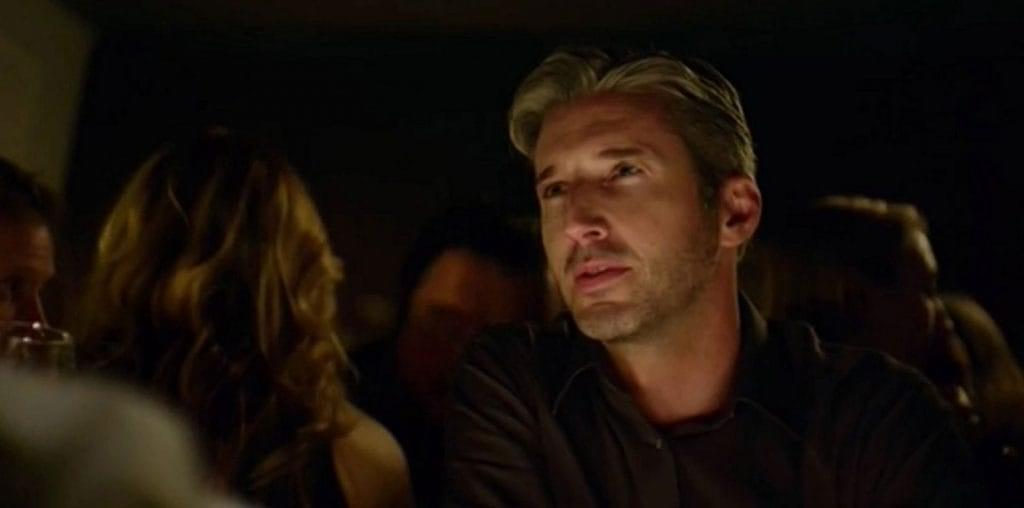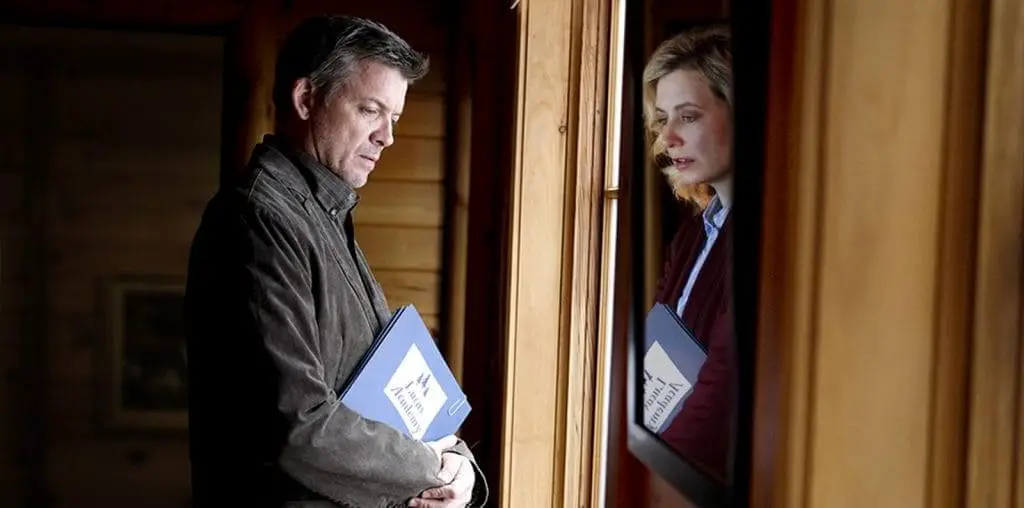
BOOTLEG FILES 390: “Vampyr” (1932 avant-garde horror feature directed by Carl Theodor Dreyer).
LAST SEEN: The entire film is available on several websites.
AMERICAN HOME VIDEO: Available from multiple labels.
REASON FOR BOOTLEG STATUS: Disregard for the film’s copyright.
CHANCES OF SEEING A COMMERCIAL DVD RELEASE: It is available, but you cannot stop the bootleggers!
Carl Theodor Dreyer’s 1932 “Vampyr” is a great film, but it is not a good film. That might sound like a contradiction, so let me explain what I mean. “Vampyr” is a landmark production that has been praised for its inventive production style – and no less a figure than Alfred Hitchcock said that it was the only film worth seeing twice.
But sitting through “Vampyr” requires more than a little patience – one friend of mine watched the film on fast-forward. Its story makes no sense and the artistic elements often interfere with the basic tenets of cinematic storytelling. When the film had its premiere in Paris, New York Times reporter Herbert L. Matthews wrote, “It is a hallucinating film which either held the spectators spellbound as in a long nightmare or else moved them to hysterical laughter.”
In many ways, the story behind “Vampyr” was more interesting than the film itself. Danish-born Dreyer had achieved an artistic triumph with his 1928 production “The Passion of Joan of Arc,” but the film was a major commercial flop. He had difficulty in obtaining funding for his next project, an adaptation of Sheridan Le Fanu’s novella “Carmilla,” but financial assistance came from Baron Nicholas de Gunzburg, a White Russian exile living in Paris. The wealthy baron agreed to help Dreyer if he could be the film’s star. Dreyer agreed – he preferred working with nonprofessionals – and de Gunzburg took the pseudonym Julian West for his screen debut.
However, Dreyer and de Gunzburg faced an unexpected problem: sound technology took full control of motion picture production. Dreyer was hoping to shoot his new film as a silent production, and he feared the international distribution potential would be limited if the film was rooted in a single language. In a late-life interview, de Gunzburg recalled the unlikely solution to this problem.
“Each scene was shot three times for the French, English and German versions whenever there was any dialogue involved,” he said. “It was shot silent with all of us mouthing the words. The sound was put in later at the UFA studios in Berlin, as they had the best sound equipment at that time.”
Beginning in the spring of 1930 at locations in France, Dreyer shot “Vampyr” over the course of a year. The film’s premiere was supposed to take place in Berlin in late 1931, but it was delayed until the spring of 1932 because another vampire film, Tod Browning’s “Dracula,” was still playing in German theaters. The film’s European release was a critical and commercial disaster, which pushed Dreyer to a nervous breakdown. The English-dubbed version – which was at least 12 minutes shorter than the European versions – received a scant U.S. release in 1934 under the titles “Castle of Doom” and “Not of This Flesh.”
Why did “Vampyr” fail so badly during its initial release? For starters, the film is something of a cheat. The eponymous vampire is a minor character – an elderly woman – and we never see her wreak havoc. Indeed, her reign of terror is limited to a single family in an isolated village. For audiences that were enchanted by Bela Lugosi’s urbane Dracula or might recall the shock of Max Schreck in “Nosferatu” or Lon Chaney in “London After Midnight,” the lack of a significant vampiric villain was a huge letdown.
Even worse, the film’s hero (played by de Gunzburg) is utterly lacking in charisma – he walks around with an unchanging dyspeptic expression – while the leading ladies are bland and ineffective. The closest thing that the film had to a memorable human was a disheveled doctor that served as the elderly vampire’s ally – although, quite frankly, he looked like Albert Einstein’s disreputable brother rather than a genuine force of terror.
Dreyer also made the error of pushing along the story by throwing huge blocks of text on the screen, including a chapter from a book that explains the impact of vampires. At a time when audiences were happy to abandon silent movies (and their intertitles) for talkies, it seemed like a step backwards for a film with very little dialogue but a surplus of on-screen text.
However, “Vampyr” presents some of the most startling imagery put on film. Weird shadows that exist without corresponding human forms dance and play on decayed walls, while an extraordinary special effects sequence finds de Gunzburg hallucinating in an out-of-body experience where he witnesses his own funeral. Elaborate tracking shots and intense close-ups add to the sense of doom that permeates much of the film. Perhaps the most influential sequence in “Vampyr” is the doctor’s death, when he is trapped in a flourmill and is slowly buried alive beneath a heavy shower of flour.
Dreyer had to wait a decade before he would be able to direct another film, the Danish-based “Day of Wrath.” In the postwar sphere of film scholarship, Dreyer’s canon was re-evaluated by critics and historians. Alas, they were not able to properly appreciate “Vampyr” – the negatives for the German, French and English versions were lost during World War II and the surviving prints were either heavily edited or in dreadful condition. (There is some confusion whether the English-dubbed “Castle of Doom” still exists – many film scholars say it is lost, but there is evidence to suggests that a 16mm print survives.)
Since it was unclear who owned the U.S. copyright to “Vampyr,” many people assumed it was a public domain work. Over the years, “Vampyr” existed in atrocious duped copies that made a mess of Dreyer’s camera effects, especially the gauzy visual style used in his exterior shots. (Rudolph Maté served as Dreyer’s cinematographer.)
A 2005 DVD release by the Criterion Collection, based on Martin Koerber’s 1998 restoration of the German-language version, is perhaps the closest we will ever come to the director’s original version. The Criterion version can be found in a number of unauthorized postings at several video websites, thus continuing the film’s history as a bootlegged offering.
As for de Gunzburg – he never acted in another film. He immigrated to America and enjoyed a career in fashion journalism, rising in the editorial ranks of Vogue. His fate was more fortunate than his co-star, German actress Sybille Schmitz, who played one of the sisters under the vampire’s spell. She continued acting in Nazi-era films, but her career deteriorated after the war and she became a drug addict. Schmitz killed herself in 1955, and her tragic life later inspired Rainer Werner Fassbinder’s 1982 classic “Veronika Voss.”
IMPORTANT NOTICE: The unauthorized duplication and distribution of copyright-protected material, either for crass commercial purposes or profit-free s***s and giggles, is not something that the entertainment industry appreciates. On occasion, law enforcement personnel boost their arrest quotas by collaring cheery cinephiles engaged in such activities. So if you are going to copy and distribute bootleg material, a word to the wise: don’t get caught. Oddly, the purchase and ownership of bootleg DVDs is perfectly legal. Go figure!


I believe Sinister Cinema issued “Castle Of Doom” sourced from an old 8mm print a few years ago,
It is fun for me to imagine a synthesized parody of this work and Dreyer’s once-lost silent masterpiece: Joan Of Arc as the Vampyr, resurrected from the ashes, wreaking havoc upon the ancestors of her persecutors. Either way, as with both films, the visual compositions and technique would kick so much a*s. 🙂